Diving into the world of Le Mans Ultimate with the Peugeot 9X8 offers a unique experience. This hypercar, with its innovative design and hybrid technology, demands a nuanced approach to simulation. Utilizing the P1 SIM Mistral pedal set, we aim to replicate the intricate braking dynamics of the 9X8 on the challenging Spa-Francorchamps circuit.
Collaboration between P1 SIM and Peugeot Sport

This project is the result of a close collaboration between P1 SIM and Peugeot Sport, with a shared goal: to bring the performance and precision of the real Peugeot 9X8 Hypercar into the world of simulation.
By leveraging technical insights from the manufacturer and combining them with the flexibility of the P1 SIM Mistral pedal set, this setup guide aims to bridge the gap between real-world engineering and sim racing experience.
The Peugeot 9X8 is not just another prototype — it’s a car with radical design choices, especially its lack of rear wing and aggressive hybrid management. That’s why fine-tuning the braking feel becomes essential, and why P1 SIM and Peugeot have worked together to make sure every simracer can feel closer to the real car.
Force Feedback: The Foundation of Control
In-Game Settings
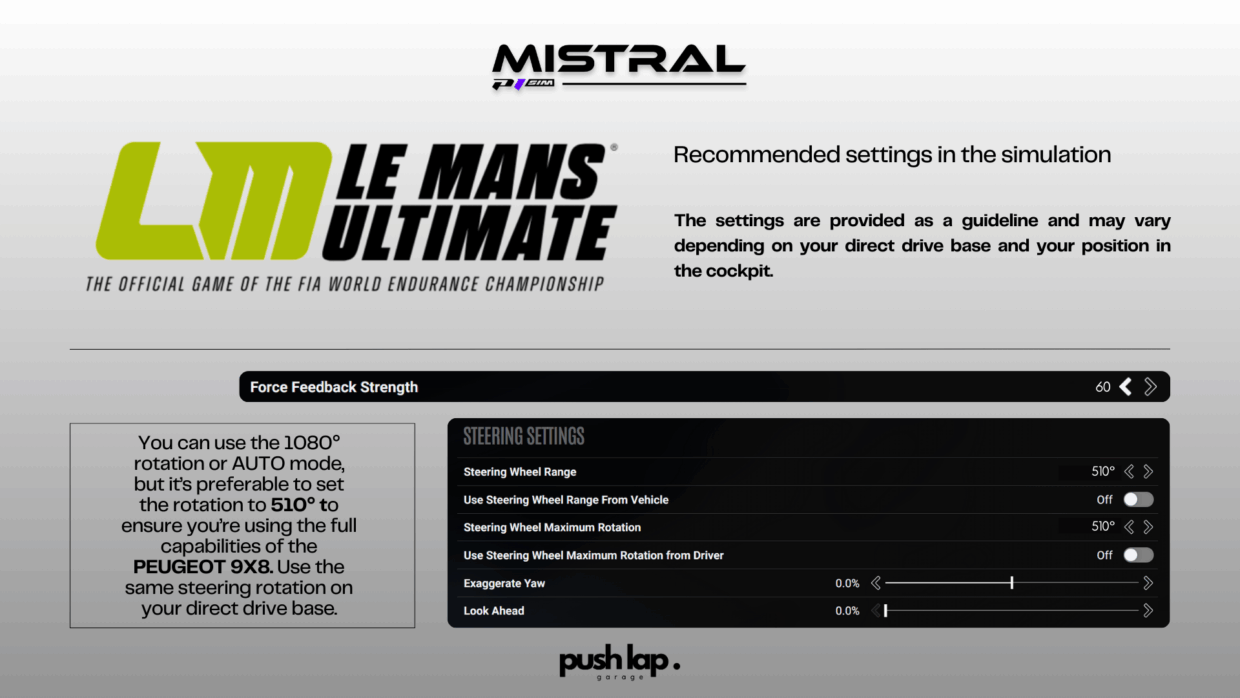
A good force feedback starts with clean signals from the simulation.
In Le Mans Ultimate, avoid overly filtered or damped settings that can blur the subtle weight transfers and grip cues of the Peugeot 9X8. Reduce in-game FFB strength slightly to let your base handle the power delivery cleanly, and adjust the steering rotation to match the actual behavior of the car. This ensures a direct and connected feel.
Direct Drive Base Configuration
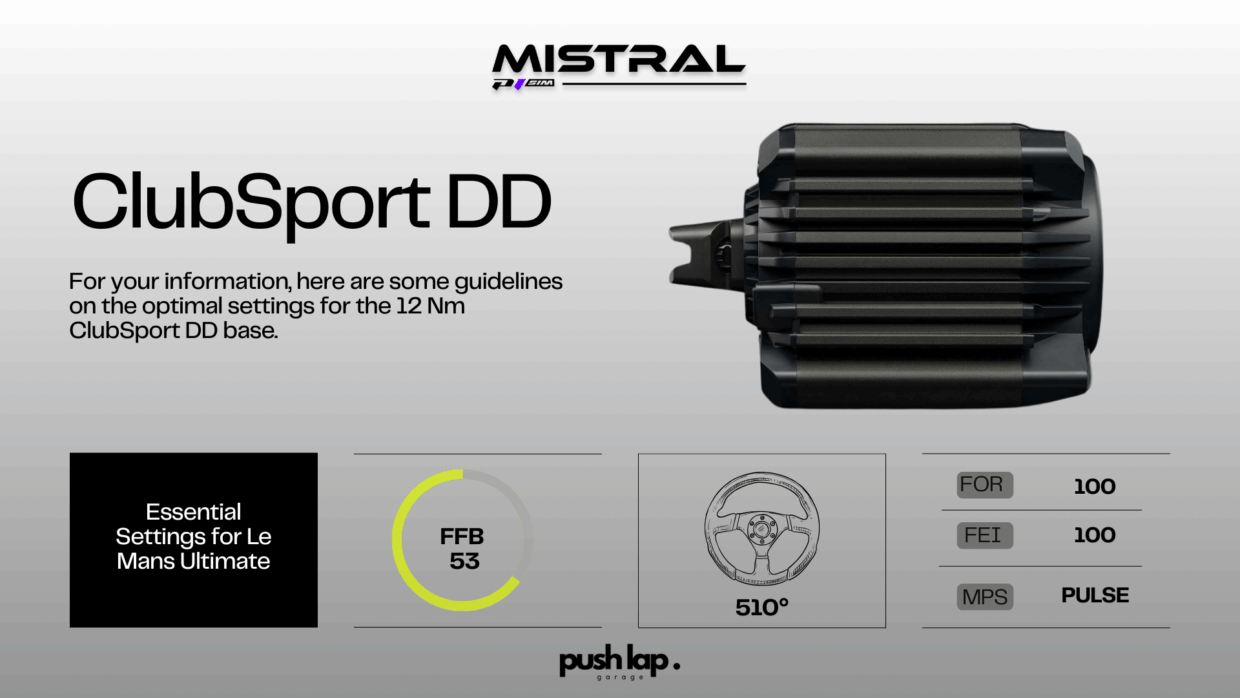
On the hardware side, the settings on your Direct Drive base are key to delivering sharp, readable feedback.
We recommend using high FEI (Force Effect Intensity) values to keep the sensations crisp, and a filter value low enough to preserve detail during braking and corner entry. Increasing the overall torque on your base allows you to feel more of the car’s balance shifts without saturating the motor. Combine this with low damping and natural friction to maintain precision.
Driver Position & Seat Adjustments
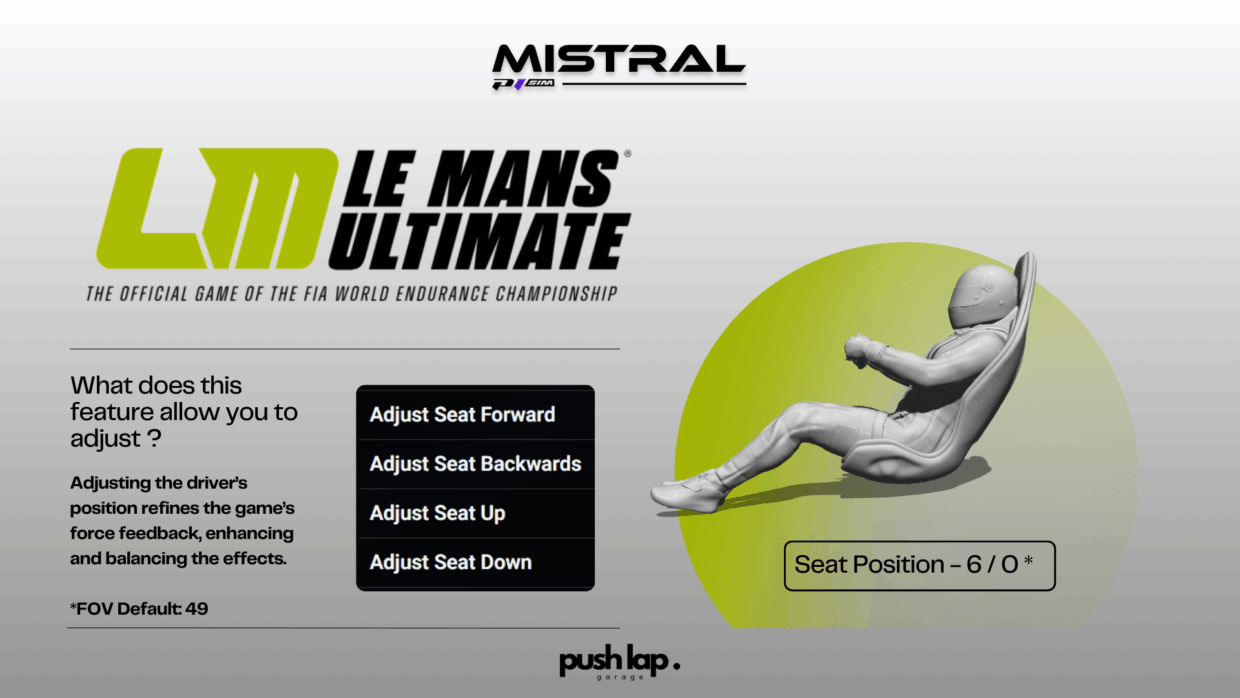
The final, often underestimated, factor is your driving position.
In simulation, your virtual seat position impacts the way FFB is perceived — especially on setups with motion systems or transducers. Raising or lowering the seat slightly in-game, or shifting it back, can alter the FFB’s balance between front and rear reactions. Physically, make sure your real seat and pedal alignment allow for stable leg pressure and full modulation. A balanced position enhances not just comfort, but clarity in braking phases.
Elastomer Selection: Balancing Realism and Comfort
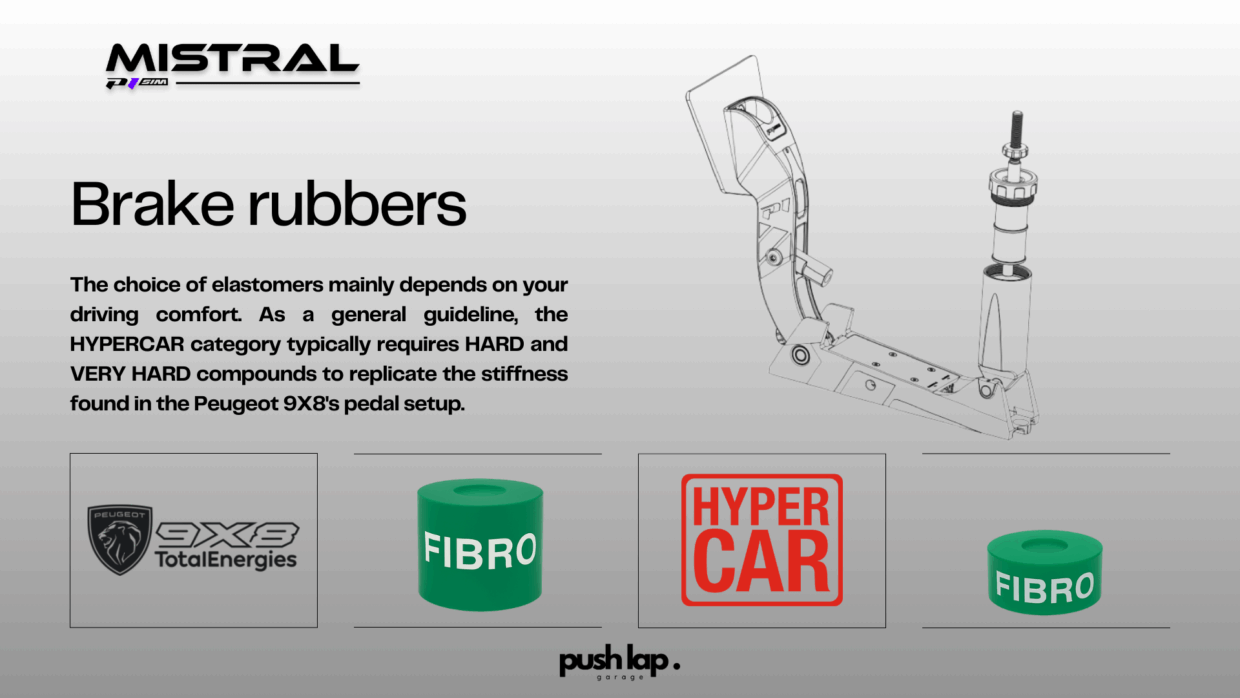
The choice of elastomers in your pedal setup influences the braking feel.
For the 9X8, a combination of HARD and VERY HARD compounds can simulate the stiffness of the actual brake system.
However, personal comfort and the absence of real-world G-forces in simulation mean that a slightly softer setup might provide better control and endurance during long sessions.
Calibration: Achieving Optimal Brake Pressure
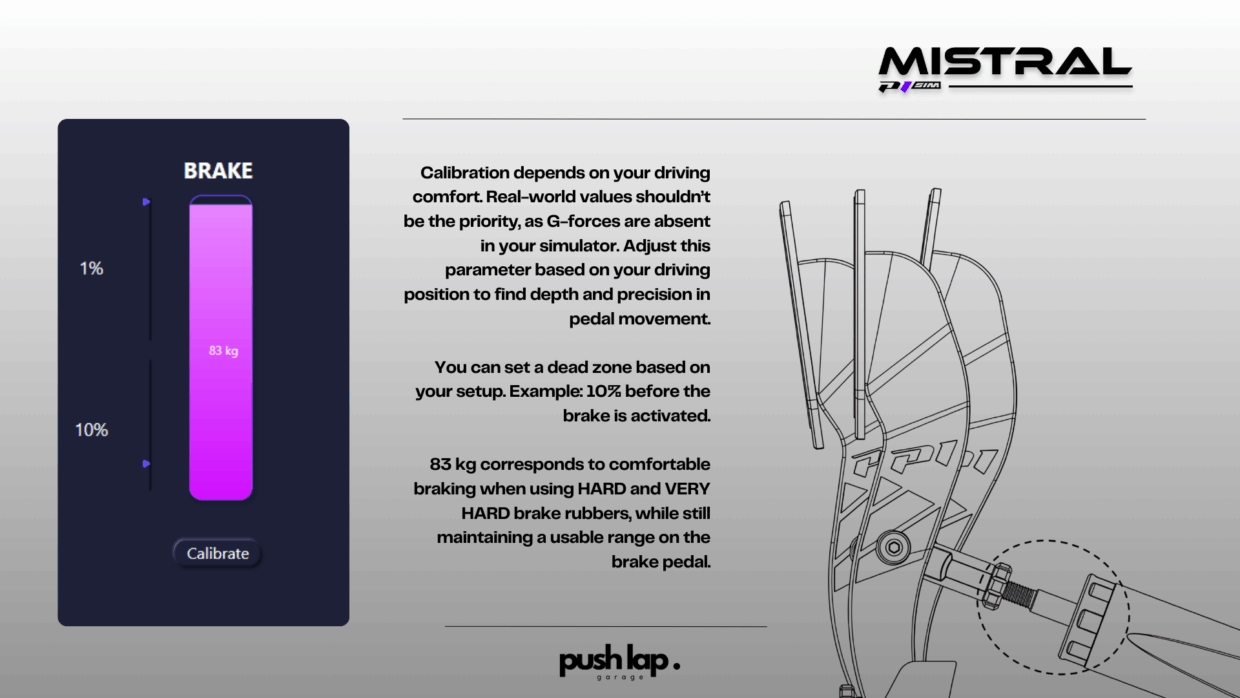
Calibrating your brake pedal to match your driving style and physical setup is vital.
Aim for a pressure that allows for precise modulation without causing fatigue.
This ensures consistent performance, especially during extended stints where maintaining concentration and control is paramount.
Brake Curve Configuration: Tailoring to Spa's Demands

Spa-Francorchamps presents a mix of high-speed straights and technical corners, requiring a versatile brake response.
Using SIM HUB, we recommend the following brake curve points for the Peugeot 9X8:
Point 1: 25% – Initial bite for energy recovery activation.
Point 2: 42% – Controlled deceleration phase.
Point 3: 58% – Transition into corner entry.
Point 4: 75% – Maximum braking force for tight corners.
This configuration allows for effective energy regeneration while maintaining stability and control throughout the circuit.
Energy Recovery and Deployment: Corner-by-Corner Strategy
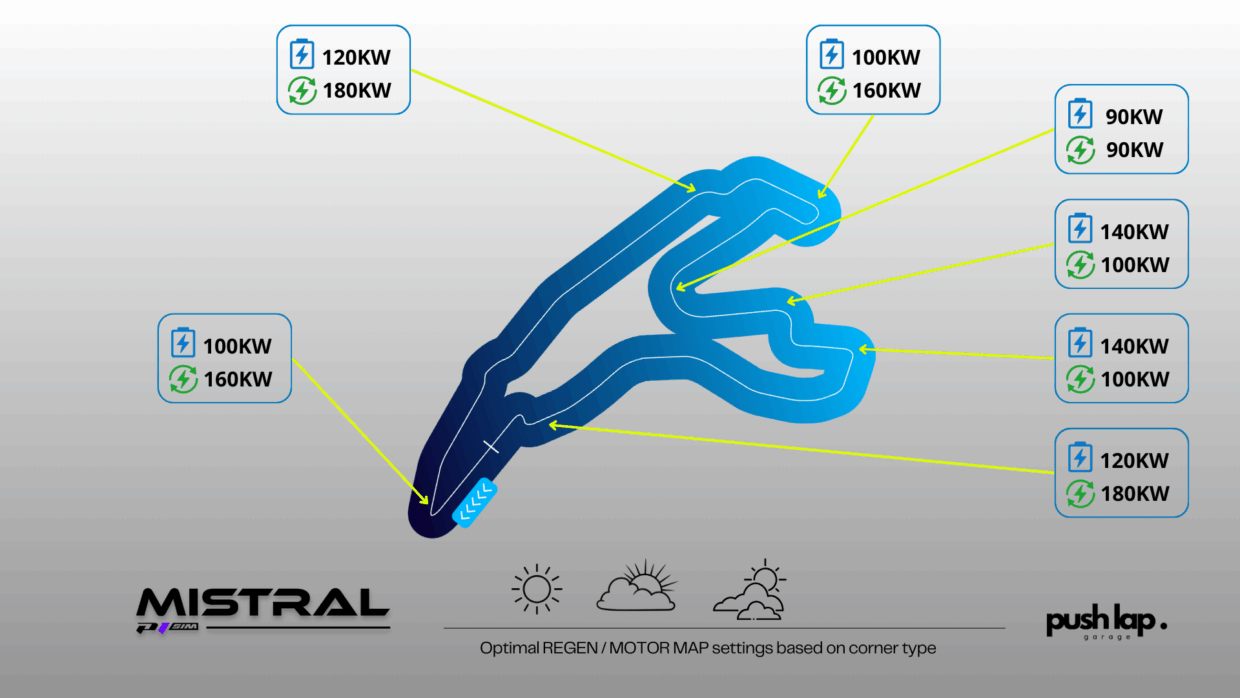
Understanding where and how the 9X8 recovers and deploys energy can enhance lap times and efficiency. Here’s a breakdown for Spa-Francorchamps:
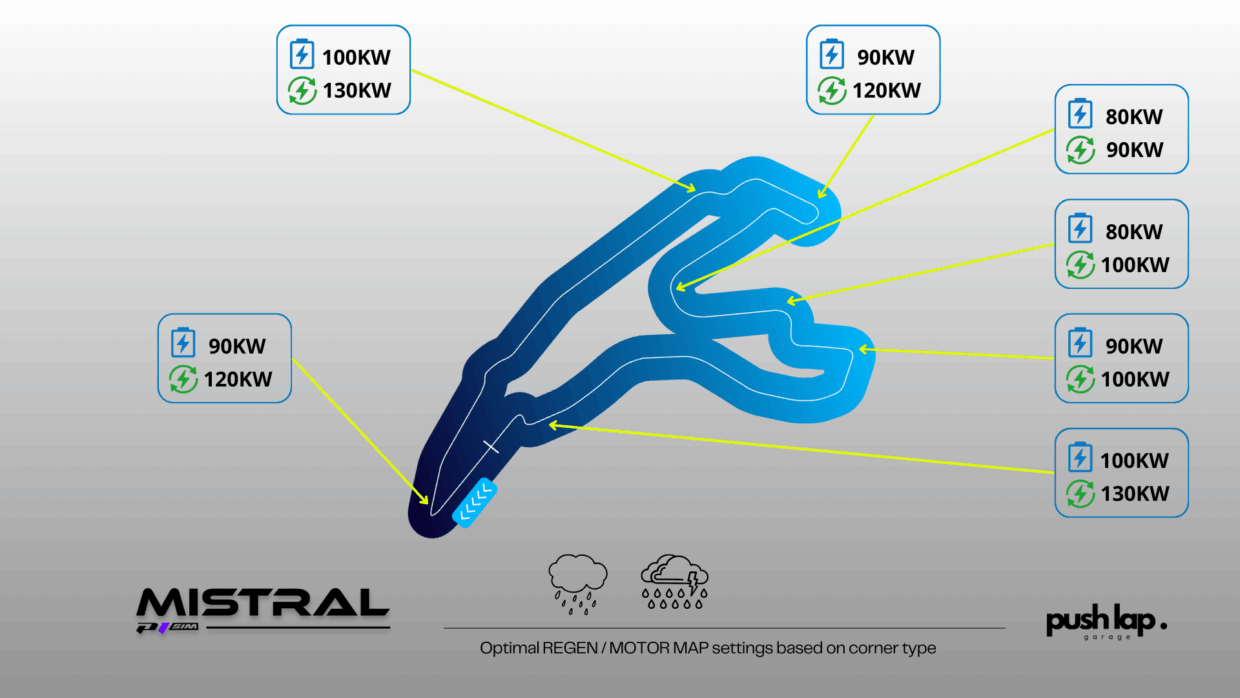
Adjusting your driving to maximize energy recovery in heavy braking zones and deploying power effectively on exits can lead to significant performance gains.
Brake Curve Phases: Application at Spa
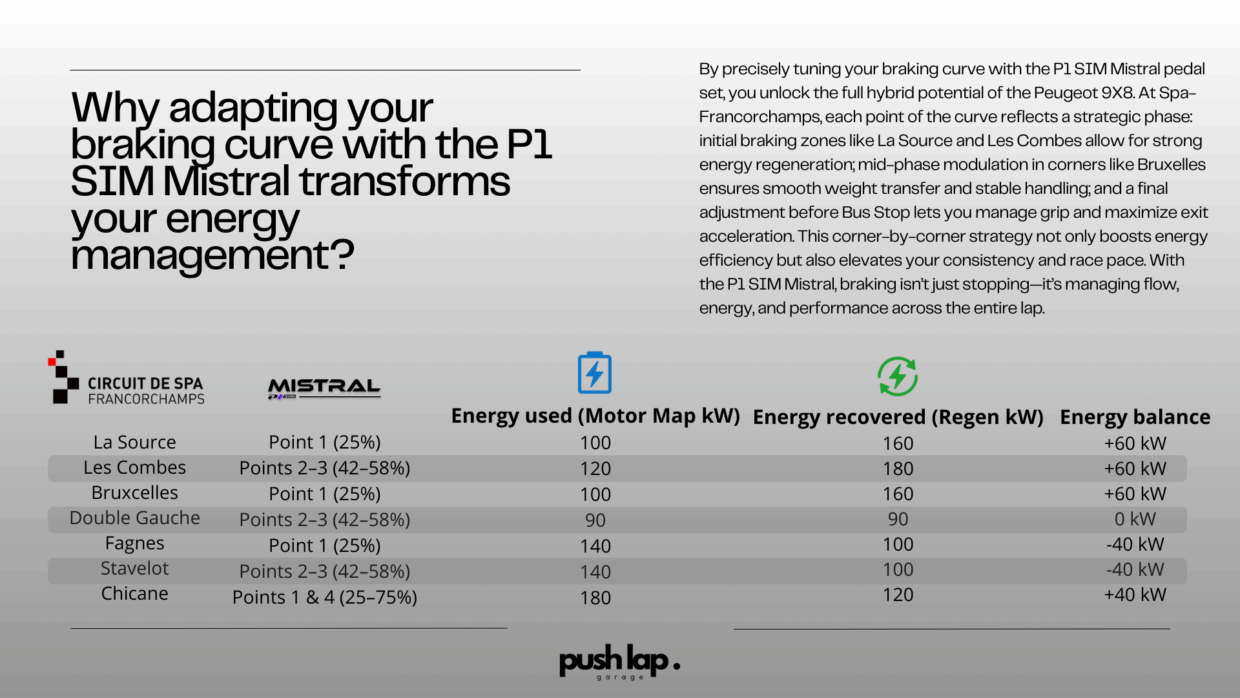
Point 1: You initiate braking with a smooth but firm press to activate the Peugeot 9X8’s front-axle energy recovery system. This phase is essential in corners like La Source and Les Combes, where early regen capture improves hybrid efficiency without overloading the front tires.
Points 2 and 3: As you continue to decelerate, slightly reducing pedal pressure helps stabilize the car. This middle phase mirrors the vehicle’s own regenerative management, especially useful in technical zones like Bruxelles or Stavelot, where abrupt weight shifts can lead to understeer or lockups. The curve is designed to preserve front grip while allowing continuous energy recovery.
Point 4: If needed, you can increase pedal pressure again to adjust for grip loss or tighten your braking line — for instance at the Bus Stop chicane, where a final burst of braking control is key. This phase ensures you maintain mechanical balance as you transition from braking to corner entry.
Conclusion: Harnessing the 9X8's Potential
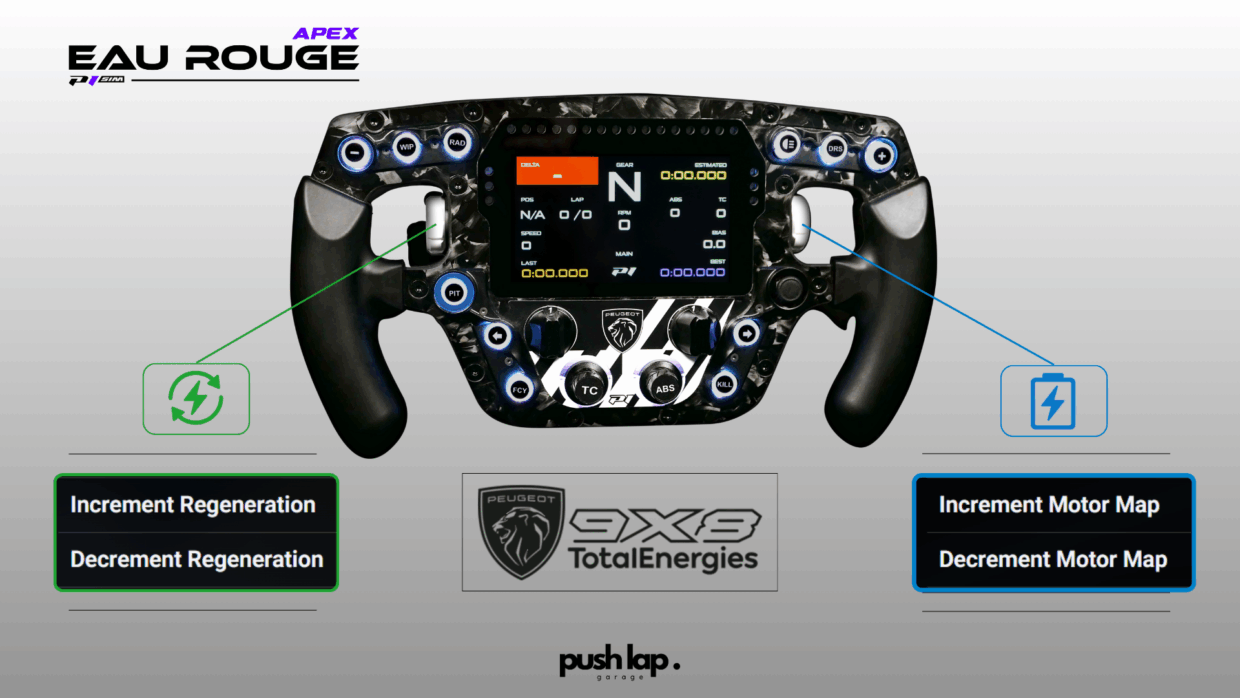
The Peugeot 9X8’s advanced hybrid system and unique design offer a distinctive driving experience in Le Mans Ultimate. By fine-tuning your P1 SIM Mistral pedal setup and understanding the car’s energy dynamics, you can unlock its full potential on the demanding Spa-Francorchamps circuit.
For a detailed visual representation of the brake curve and energy strategies, refer to the accompanying PDF guide.

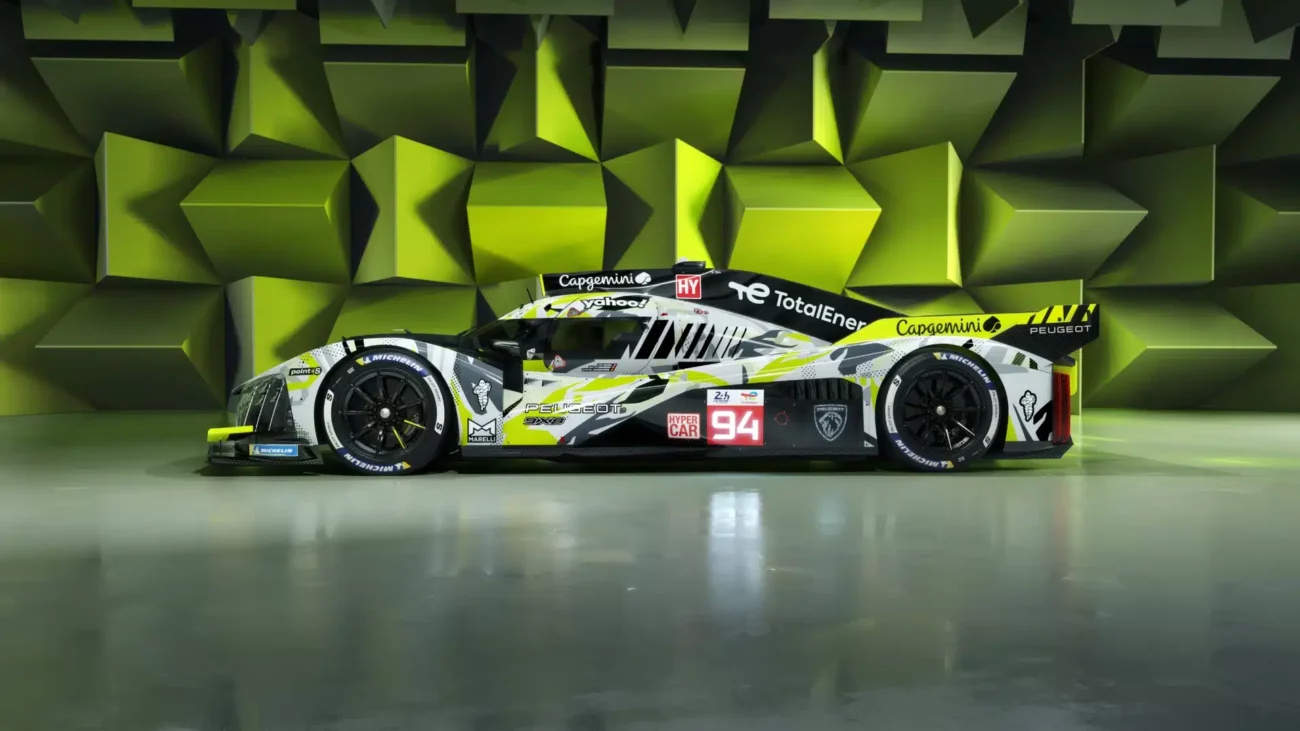
Leave a Comment